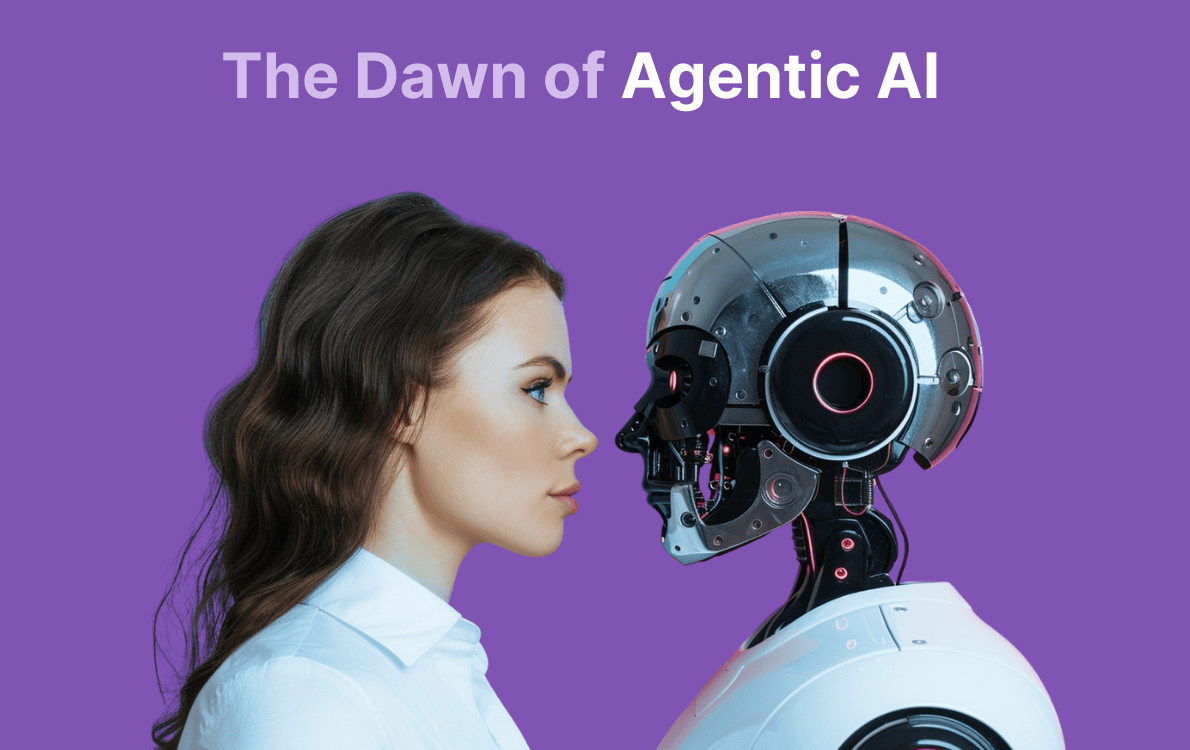
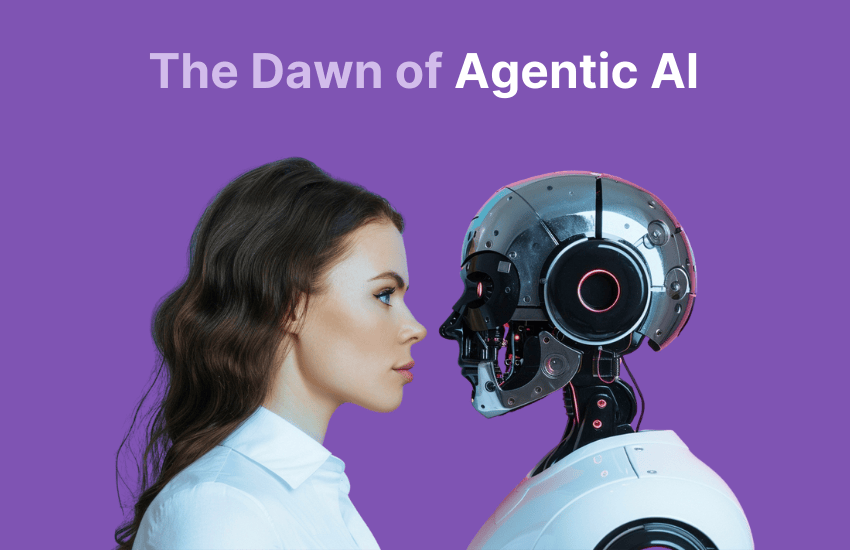


Technological revolutions have a way of sneaking up on us. Decades ago, few could have foreseen the seismic impact of the internet or cloud computing. Today, they’re the backbone of modern enterprise, reshaping industries and creating unparalleled opportunities. And yet, here we are, on the cusp of another transformative wave: agentic automation—the next big step in the evolution of AI and automation.
Just as steam power and electricity revolutionized their eras, agentic automation promises to redefine how businesses operate.
Agentic AI is a cutting-edge form of artificial intelligence designed to solve complex, multi-step problems independently. Unlike regular AI chatbots that answer one question at a time, Agentic AI can think, plan, and take actions across multiple stages of a task without constant human input. It uses advanced reasoning and planning to analyze data, come up with strategies, and execute solutions.
This technology has the potential to improve productivity and efficiency in various industries by handling challenging tasks. It can process information from many sources, identify issues, and carry out the best solution seamlessly.
Picture this: AI agents dynamically analyze their environment, interpret data, plan solutions, and execute actions—all while navigating unpredictable workflows. Unlike traditional robotic process automation (RPA), which thrives on rules-based, repetitive tasks, agentic automation thrives in complexity. It’s like hiring an ultra-fast, ultra-efficient virtual workforce.
For Example: Imagine a clinic that uses an Agentic AI to manage its appointments. A patient might want to book a specific doctor at a time that fits their schedule. The Agentic AI could:
Check availability: by analyzing the doctor’s calendar, clinic operating hours, and the patient’s preferred time.
Handle conflicts: by identifying and rescheduling overlapping bookings or suggesting alternative times.
Confirm details: by sending a message to both the patient and doctor to finalize the appointment.
Follow up: with reminders or updates if there are changes to the schedule.
This all happens without any manual intervention, saving time for both the staff and the patient while ensuring the process runs smoothly. Agentic AI can automate such workflows across various industries, freeing humans to focus on more important tasks.
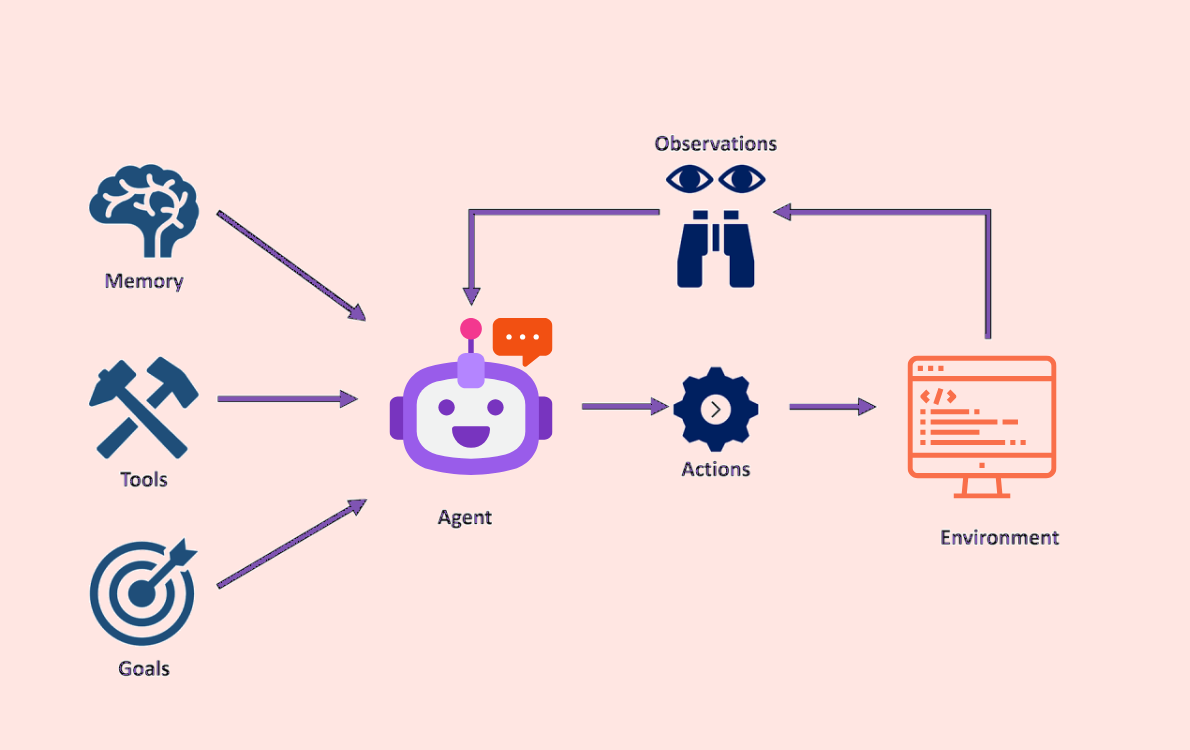
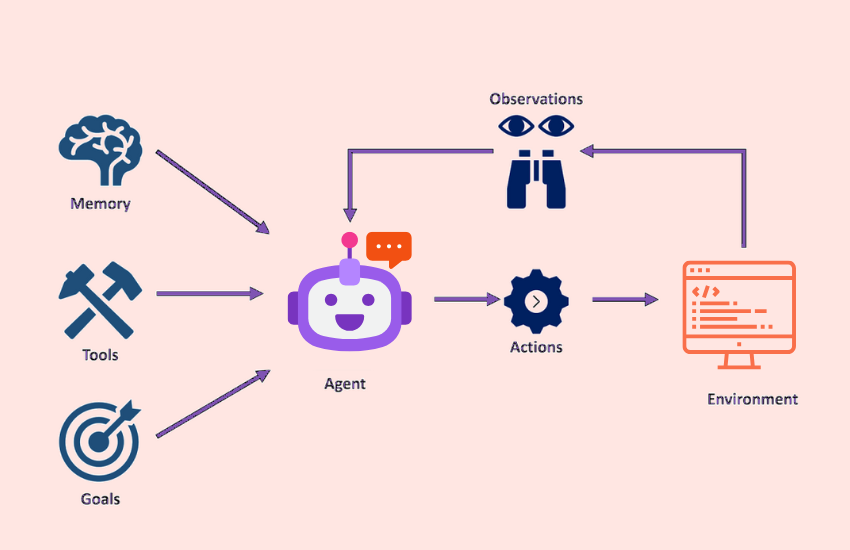
Agentic AI follows a structured four-step process to ensure tasks are handled accurately, efficiently, and with the ability to improve over time. Here’s an overview:
1. Perceive
AI agents collect and process data from various sources such as sensors, databases, and digital interfaces. This includes extracting meaningful features, recognizing objects, or identifying relevant entities. For instance:
2. Reason
At its core, Agentic AI employs a large language model as its reasoning engine. This orchestrator understands tasks, devises solutions, and coordinates specialized models for specific functions, such as:
Using techniques like retrieval-augmented generation (RAG), the AI accesses proprietary data sources to deliver precise, context-aware results, making it highly adaptable to complex scenarios.
3. Act
Agentic AI executes tasks by integrating with external tools and software via APIs. Guardrails ensure operations remain within predefined limits. For example:
This controlled execution ensures reliability and alignment with business policies.
4. Learn
Agentic AI continuously improves through a feedback loop, often referred to as the “data flywheel.” By analyzing data from its interactions, the system refines its models to become smarter and more efficient over time. This adaptability allows businesses to benefit from a tool that evolves alongside their needs, driving better decision-making and operational efficiency.
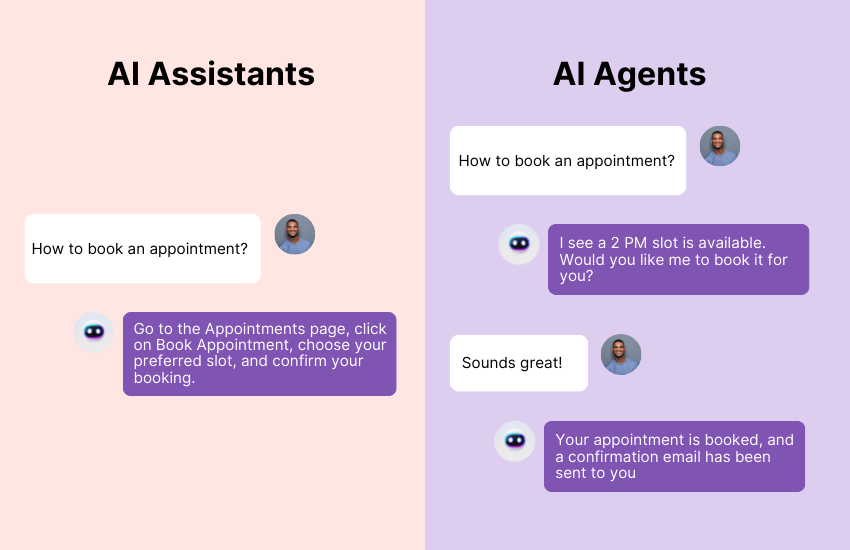
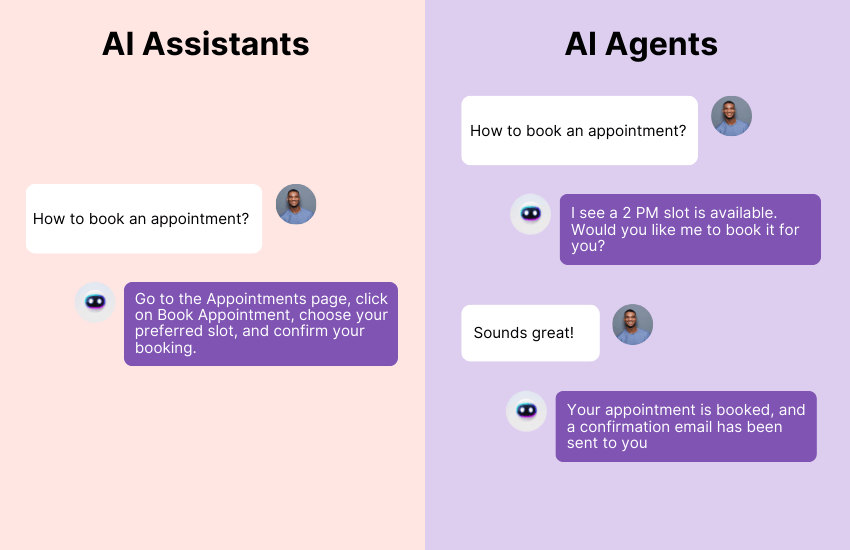
AI-powered technologies, including assistants and agents, are transforming workflows, enhancing productivity, and solving problems. While both leverage generative AI, machine learning, and natural language processing (NLP), their roles and strengths vary significantly.
AI Assistants
AI assistants provide interactive support, handling diverse tasks and queries while learning from user interactions. They focus on improving user experiences with versatility and adaptability, making them ideal for conversational interfaces and task management.
AI Agents
AI agents work autonomously, managing specific tasks or workflows without constant human input. Their ability to scale and handle complex, multi-task operations independently makes them suitable for specialized applications.
AI agents and assistants together create a powerful synergy. Agents manage complex tasks autonomously or gather data, while assistants translate these results into user-friendly outputs or guide agents with user inputs. This collaboration results in intuitive and effective AI-driven solutions.
As AI evolves, the integration of agents and assistants is becoming seamless. Improvements in algorithms, NLP, and reasoning models enable sophisticated interactions and handoffs between autonomous and conversational components, delivering faster, higher-quality outputs.
AI Assistants: Assistants are generally reliable but depend on the robustness of their language models. They can encounter issues like hallucinations (inaccurate outputs) or struggle with subtle prompt changes. However, they are less affected by dynamic environments as they don’t rely on external tools.
AI Agents: Agents face unique challenges due to their autonomous nature and dependency on external tools. They may encounter difficulties in creating plans, get stuck in feedback loops, or fail to adapt to changes in the tools they use. Training and computational demands are high, and their reasoning abilities are still developing.
As foundational AI models become more intelligent and adaptable, we anticipate advanced, self-guided applications. For now, human intervention remains essential for optimizing or redirecting AI when needed. As AI continues to advance, the line between agents and assistants may blur, unlocking even greater potential for AI-powered solutions.
Choose AI Assistants if your goal is to enhance user convenience for routine interactions or streamline simple tasks.
Opt for AI Agents if you aim to automate complex processes, increase operational efficiency, or create self-sustaining systems capable of learning and evolving.
Both tools can work together to build a comprehensive AI-driven ecosystem. Whether you're starting with an assistant or leveraging the power of agents, Sanctum Digital Solutions can guide you to the perfect AI solution for your needs.
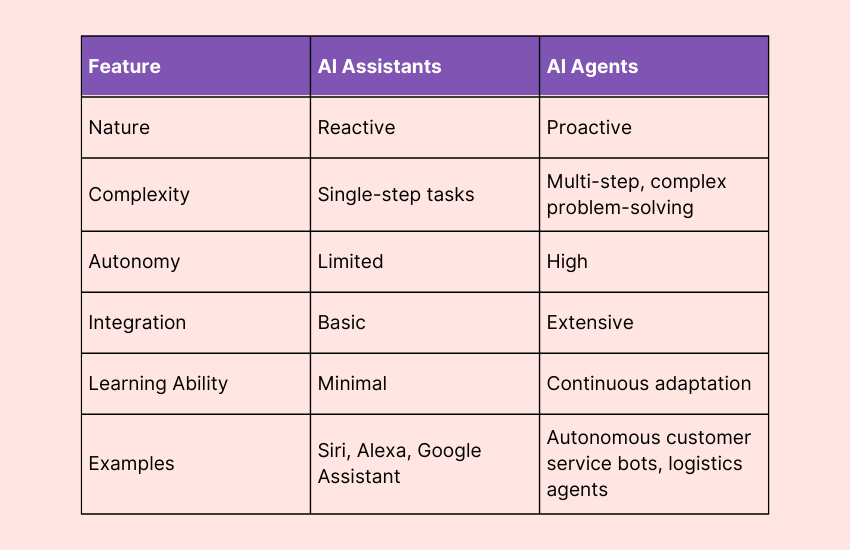
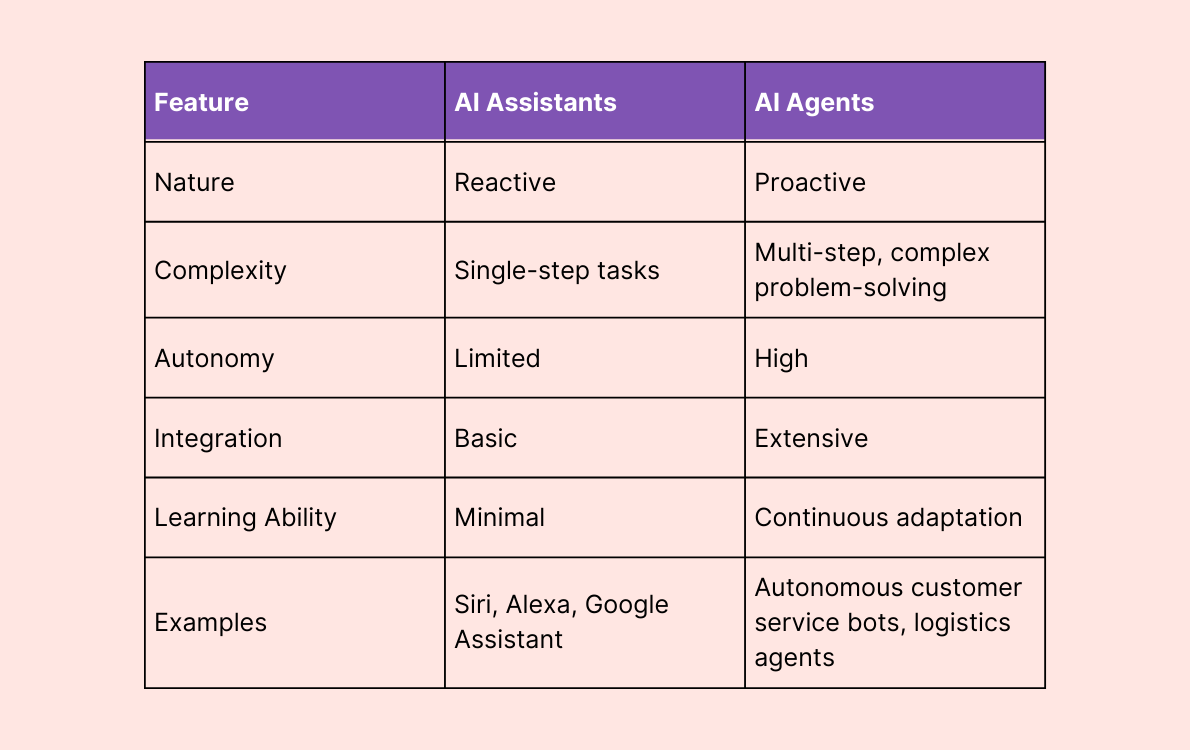
1. Smarter, Faster Decisions
Agentic automation processes massive amounts of data in real time, delivering actionable insights faster than humans ever could. From optimizing supply chains to detecting fraud, it ensures decisions are based on up-to-the-minute data, driving better outcomes at lightning speed.
2. More Engaged Teams
By offloading repetitive tasks to AI agents, employees can focus on creative, strategic work that adds value. Happier, more fulfilled employees aren’t just good for morale—they’re critical for innovation and growth.
3. Continuous Learning
Unlike static automation tools, AI agents learn and improve over time. They adapt to changing environments, enhancing processes and driving greater efficiency with each interaction.
Transitioning to agentic automation requires strategic planning. Here are five ways to get started:
1. Leverage What You Already Have
Most enterprises already have a treasure trove of data and partially automated workflows. These can serve as a strong foundation for agentic automation. For instance, if you’re using intelligent document processing (IDP), why not take it further? AI agents can not only extract data but also make informed decisions, such as evaluating mortgage applications or approving transactions.
2. Build a Robust Infrastructure
AI agents thrive in structured ecosystems. Orchestration tools are essential to coordinate tasks, prevent miscommunication, and align agents with business objectives. Think of it as building a symphony—agents are the musicians, but orchestration ensures they play in harmony.
3. Embrace RPA and Agents Together
Agentic automation isn’t here to replace RPA; it’s here to enhance it. RPA excels at structured, repetitive tasks, while agents handle the dynamic, unpredictable ones. Together, they create a seamless end-to-end automation system.
4. Target the Long Tail of Automation
Many processes have remained unautomated because they’re too complex for traditional tools. Agentic automation bridges these gaps, allowing businesses to tackle those stubborn, high-impact workflows that were once out of reach.
5. Know Your Processes and Data
Understanding your workflows is crucial. Process mining and task mining reveal inefficiencies and opportunities for improvement, while tools like knowledge graphs equip agents with context, ensuring smarter decisions.
The future of enterprise is agentic. Companies that embrace this transformation will find themselves faster, leaner, and more adaptable. But adopting agentic automation isn’t just about deploying cutting-edge technology—it’s about rethinking how your business operates.
At Sanctum Digital Solutions, we specialize in helping businesses navigate this shift. Our AI consultants know how AI help businesses, with decades of experience in crafting bespoke agentic automation systems tailored to your unique needs. We understand the intricacies of AI orchestration and how to seamlessly integrate it into your existing ecosystem.
Whether it’s building smarter workflows, enabling autonomous decision-making, or creating a virtual workforce that evolves with your business, we’ve got you covered. With our expertise, you can be confident you’re not just keeping up with the future—you’re leading it.
Ready to get started? Let’s redefine what your business can achieve.
Iva
Online
Hi there 👋 I'm Iva. How can I help you today?